Speaker
Description
Whispering gallery mode (WGM) resonators can reach ultra-high quality factors that lend a hand to enhance light-matter interaction, making them suitable for different both passive (sensing, filters, resonators) and active (lasing, nonlinear effects) applications. The surface of a WGM resonator can be functionalized with a nanomaterials to enhance desirable optical properties, tailoring it from sensitivity to any perturbations of the surrounding environment,or to the generation of nonlinear effects at relatively low powers. Silica doped with erbium is widely used for optical amplification while metal nanoparticles act like nano-antennas and increase sensitivity to surrounding media via localized surface plasmon resonances. The majority of research focuses on each aspect of passive applications and active applications of WGM resonators separately. The possibilities to combine the two types of application creating a hybrid active/passive system has not been widely explored.
Tests have shown that performing deposition of Er ions via dip coating on a clean prepared optical fiber before sphere fabrication provides better quality microspheres. We have observed lasing at 1530 - 1560 nm at a threshold of 2 dBm (1.6 mW) when pumping doped microspheres with 1470 - 1500 nm. Microsphere samples emit green light when pumped with 1530-1560 nm light. For higher concentrations of Er, the emission is more intense. Optimal concentration of Er ions is vital for generation of lasing signal, as both too high and too low concentration of Er ions incorporated into silica microspheres will not generate any lasing signal. Lasing was also observed when additionally functionalizing the sphere surface with gold nanoparticles (Au-NPs). When functionalizing with microsphere surface with Au NPs, it appears multiple (3-5) deposition cycles using 1:10 diluted colloidal solution of 10-13 nm Au NPs might be beneficial.
The research is financed by the Recovery and Resilience Facility project "Internal and External Consolidation of the University of Latvia" (No.5.2.1.1.i.0/2/24/I/CFLA/007).

